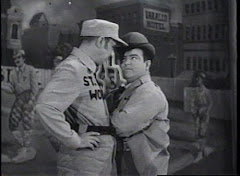This Father's Day part of my treat was a family day trip to the Oregon coast. We went to Pacific City and had a great time. One of the many things I love about that area (aside from the fact that it's never very crowded) are the fabulous geologic formations. The shape, color and unique makeup of these formations has lead me to an interesting hypothesis about a possible explanation for the unique style of North West native art. Noodling further about this hypothesis got me to thinking about the nature of science-vs-mysticism-vs common sense reasoning that illustrates many of the problems we face trying to rationalize one with the others.
Below is a composite of three NW native images that are pretty representative of the artistic style of Pacific rim native American cultures. These are the kinds of images seen on totem poles for example. I've always been fascinated by native art and have a particular fondness for the NW styles.

I've never really seen a discussion as to the origins of this style but when you walk around Pacific City you see the rock formations that are illustrated below.




 It doesn't take a rocket scientist to recognize the similarity amongst these images. Similar mineral rich rocks are found up and down the Oregon coast, though these are some of the most currently accessible. It is not a huge stretch to imagine that rocks like these might have been viewed by native tribesmen of old and invoked complex images of animals, beings, etc. The first image in particular has naturally occurring rifts in its one 'arm' that look very much like fingers or claws of a mythic beast.
It doesn't take a rocket scientist to recognize the similarity amongst these images. Similar mineral rich rocks are found up and down the Oregon coast, though these are some of the most currently accessible. It is not a huge stretch to imagine that rocks like these might have been viewed by native tribesmen of old and invoked complex images of animals, beings, etc. The first image in particular has naturally occurring rifts in its one 'arm' that look very much like fingers or claws of a mythic beast.We talked as a family about this possibility and my daughter asked. "So is this where they got the idea? I mean it looks pretty obvious."
My response was the automatic answer of a skeptic; "I have no idea. It's possible but we certainly can't say for sure. We'd have to know a lot more before I'd be comfortable with that claim."
She responded, "Dad, what else could it be. Look at them. They look just like the paintings."
"That doesn't really prove anything." was my somewhat predictable comeback.
She rolled her eyes knowing that she was about to fall victim to one of my gentle science rants, but escaped in the nick of time by offering to run with the dog (the infamous hellhound) in the surf...
What struck me is how this little scene mimics the larger picture of science in history and society. Long ago, some artisans fashioned art that looks a lot like these formations. Whatever their inspiration, they presumably had no idea what these formations were and we have pretty good anthropological evidence that native cultures anthropomorphized many things as part of their spiritual beliefs. It's not too hard to imagine (at this point all we can safely do) that some one coming upon that first rock in centuries past might have though it was some kind of mystical bear, for example. At that point, something completely natural from the standpoint of its geological origins may have taken on a spiritual meaning creating a new 'reality' for those laying eyes on it. Later fellows would no doubt have been warned to avoid the wrath of the sea bear and would therefore inherit the observational bias of their forebears. With no competing world view to offer any alternate explanation habits form not dissimilar to Pascal's Wager - it's probably better to just avoid that rock if I don't know that it isn't a bear.
Now, being schooled somewhat in science and skepticism, and untainted by the lore of the NW as anything other than another quaint native mythology, I can understand the geologic origins of the rocks and understand how these perfectly natural objects and processes might have contributed to the evolution of a spiritual belief system. Might have of course being the important concept here. This point illustrates the tension between science and common sense reasoning - which is often neither. It looks obvious that these rocks are very similar to the art works. But association and similarity is not causation, which is the precise flaw in much of what comes to be called common sense. Coincidence leads to association which leads to causation in people's minds. That simple formula plays itself out daily in millions of interactions despite the fact that orders of magnitude separate coincident items and events from truly associated items from that tiny subset of true cause and effect relationships. Coincident association is easy and natural - cause and effect requires the discipline of science.
And this is the way the majority of Americans view the world: some of them see not the rock but a sea bear, some see the rock and the art and just know they must be related, whether factual or not, and a few see the similarity but need a lot more evidence before they can accept that one lead to the other...





















